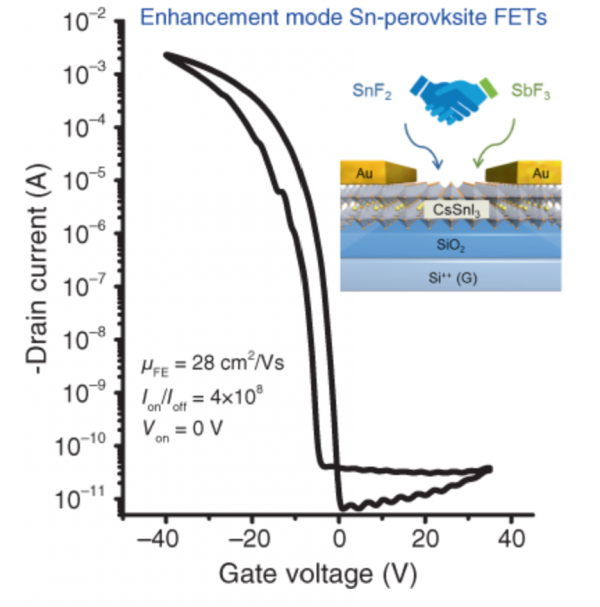Antimony fluoride (SbF3): A potent hole suppressor for tin(II)‐halide perovskite devices
- 저자
- Ao Liu, Huihui Zhu, Soonhyo Kim, Youjin Reo, Yong‐Sung Kim, Sai Bai, Yong‐Young Noh
- 저널명
- InfoMat, 5, 1 (2023)
- 년도
- 2023
- Link
- https://doi.org/10.1002/inf2.12386 942회 연결
[Abstract]
Tin (Sn2+)-based halide perovskites have been developed as the most promising alternatives to their toxic Pb-based counterparts in optoelectronic devices. However, the facile tin vacancy formation and easy oxidization characteristics make Sn2+-based perovskites highly p-doped with excessive hole concentrations, which significantly hinder their applications. Herein, we demonstrate a potent hole inhibitor of antimony fluoride (SbF3), which possesses a higher hole-suppression capability than conventional tin fluoride (SnF2). A small amount of SbF3 allows a wide range of hole-density modulation with no or less SnF2 addition, thus mitigating the negative effects of using only SnF2. A SnF2/SbF3 co-additive approach was further developed to achieve high-performance Sn2+ perovskite thin-film transistors operated in the enhancement mode with a five-fold enhancement of the field-effect mobility and improved operational stability compared to using only SnF2. We expect that the SbF3 hole suppressor and co-additive approach can provide opportunities for the development of high-efficiency Sn2+-perovskite optoelectronic devices.
